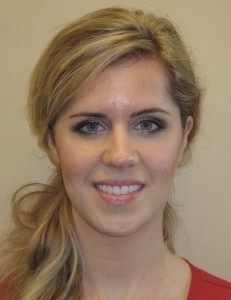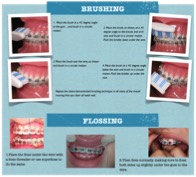Summary:
Dentists offering Six Month Smiles cannot move teeth faster than orthodontists
The braces used in Six Month Smiles are the same as those used by orthodontists
Treatment time is shorter with Six Month Smiles because typically only the front teeth are moved
Six Month Smiles is not less expensive than conventional braces
I have recently had several patients who have asked me about ads they’re hearing on the radio and TV about a “new” orthodontic technique that can straighten teeth in only six months and do it cheaper than regular braces. What is this “new” technology? Can it really move teeth faster? Is it safe? And is it really cheaper than braces from an orthodontist?
There are several “short-term orthodontic” companies that offer primary care dentists two-day courses in straightening teeth and then provide them with the marketing and dental supplies necessary to begin offering braces immediately upon leaving the seminar. Two of the most popular companies are Six Month Smiles and PowerProx Six Month Braces. The demand for these products has been huge because on the surface they offer patients what they want, shorter treatment time for less money. What is this new technology and does it really move teeth faster?
There is nothing new about the braces used in short-term orthodontics. Some doctors use clear or tooth colored braces. Others may offer short-term treatment using good old fashioned silver brackets. The braces used by dentists offering reduced treatment time are exactly the same as those used by orthodontists. There is nothing in the design of these brackets or wires that moves the teeth any faster. The rate at which teeth move is limited by natural processes in the bone and ligaments around the teeth and all doctors play by the same biological rules. While there are some additional procedures (like Propel, AcceleDent, and Wilkodontics) that have been shown to increase the rate of tooth movement, the speed at which the teeth will move during Six Month Smiles or PowerProx treatment is exactly the same as conventional orthodontic treatment no matter which brand of brackets or wires are being used. If the rate of tooth movement is the same, how can they get the same orthodontic result in only six months?
The answer lies in the phrase “same orthodontic result.” Providers of short-term orthodontics will tell you, if they are following the guidelines given at their seminar, that the reason their treatment is shorter is because they are shooting for a different end result. As a specialist, I am trained not only to align the front teeth (the “social six”), but also to correct crowding, protrusion, open bites, deep bites, cross bites, over bites, under bites, impacted teeth, extra teeth, missing teeth, etc. Straightening the teeth in front that people see is generally achievable in the first six months of treatment no matter who provides the treatment. It is the correction of the above-listed bite issues that requires the extra time. The braces are on the teeth a shorter time with short-term orthodontics because the dentist merely aligns the front teeth and then takes the braces off without addressing the other problems. In other words, the treatment isn’t faster, it is just shorter because it is intentionally terminated before treatment is complete. But what if you only want your front teeth straight? Is this treatment approach healthy?
Every smile is different. There are some patients that can be treated in six months or less and the results are just fine. These patients usually start with only mild crowding or spacing. These patients have a bite at the start that is fairly normal. If the problems are mild, then six months is plenty of time… and the fees should reflect the shorter treatment time. If you have crowding, an open bite, a deep bite, an over bite, or bite issues in the back, merely aligning the front teeth in six months may leave you feeling things are worse after treatment than they were before. Crowded teeth will flare forward if merely aligned. Small overbites may become big overbites. Open bites may open further. Problems with the occlusion may actually get worse if the braces change the bite and then the teeth are left in that position. I’ve seen cases where six months of treatment gave a decent result. I’ve also retreated patients who were unhappy with their protrusive teeth and a bite that wasn’t corrected by the “short-term treatment” they received elsewhere. The key is having the training and experience to recognize if a case really is “simple.”
Finally, is short-term orthodontics really cheaper? Patients who have come to me for second opinions have disclosed that their quote for six months of treatment was about 75% of what I quoted them for full treatment. This sounds less expensive at first, but if the treatment I provide takes from 12 to 18 months and fixes everything, paying 75% of my fee to get only the front teeth straightened is actually more expensive. For example, imagine that you get two quotes for painting your home. If one painter quotes you $4000 to paint the entire house and a second offers to paint just the front side that is visible from the street for $3000, which one is actually cheaper? Additionally, if you are not happy with your final result, you’ll have to pay a real orthodontist to put your braces back on and finish the case.
If something sounds too good to be true, it probably is. Orthodontists are specialists with two to three years additional training beyond dental school in straightening your teeth. Does it make sense that a dentist with only a two-day course can straighten your teeth faster than a specialist? Your smile and bite are a complex system. You only get one set of teeth. Shouldn’t you do your homework and make sure you get the right treatment the first time?
– See more at: http://www.gregjorgensen.com/blog/2015/05/does-six-month-smiles-really-move-teeth-faster-than-regular-braces/#sthash.zva5hKfI.dpuf




